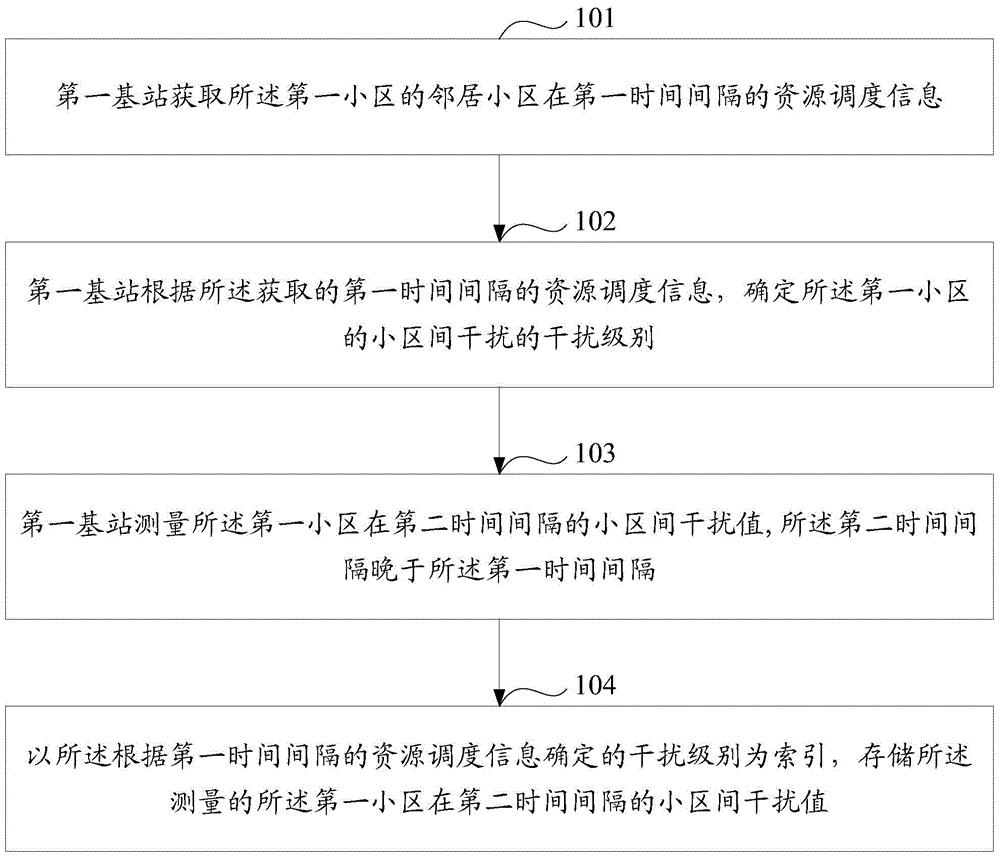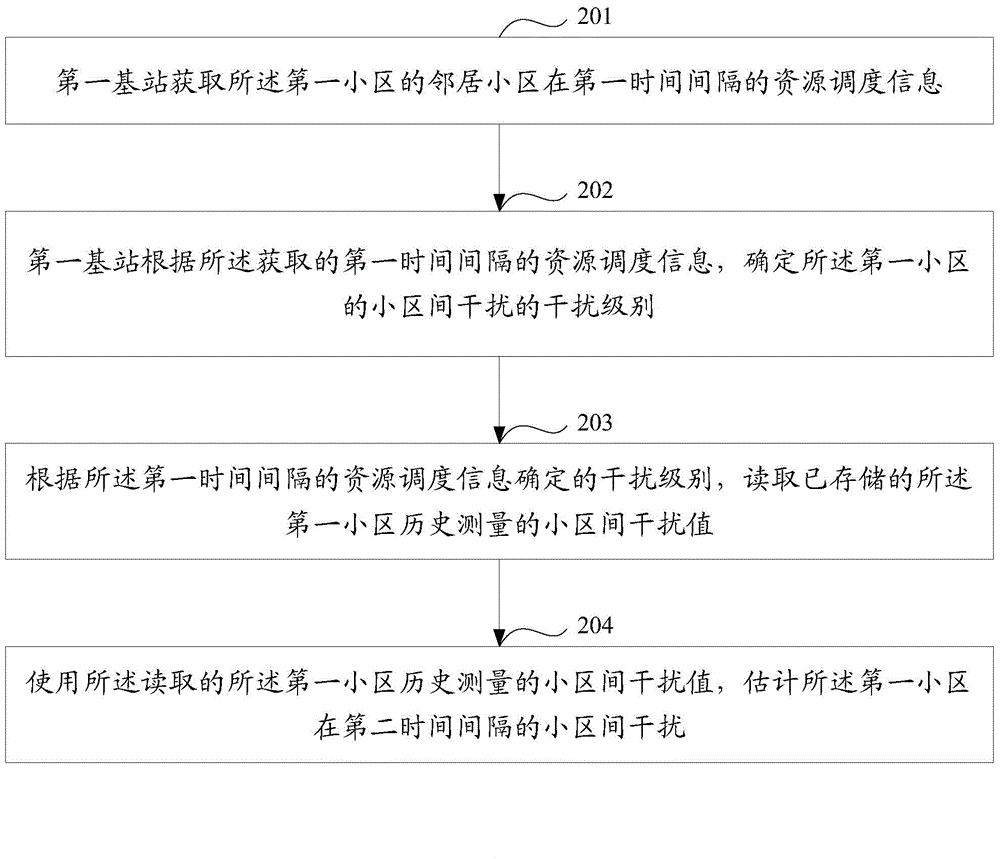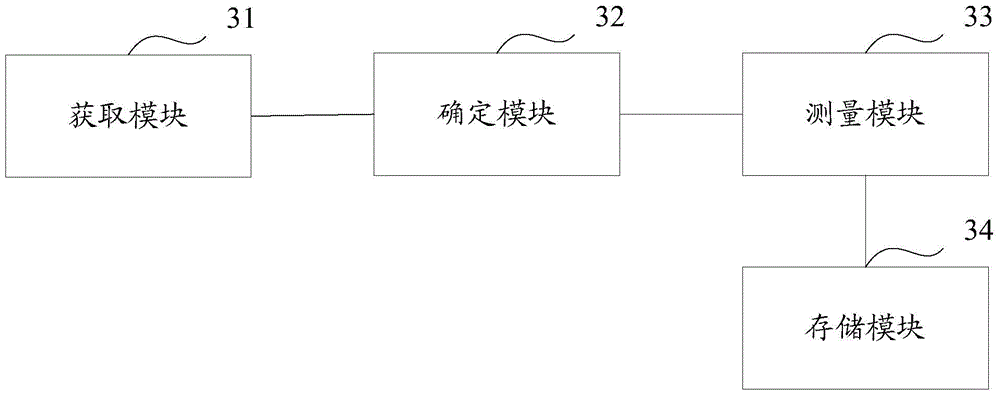Method and device for processing inter-cell interference, control device and base station
An inter-cell interference and cell technology, applied in transmission monitoring, distributed allocation, electrical components, etc., to solve problems such as inaccurate SINR
- Summary
- Abstract
- Description
- Claims
- Application Information
AI Technical Summary
Problems solved by technology
Method used
Image
Examples
Embodiment 1
[0108] Such as figure 1 As shown in FIG. 1 , it is a schematic flowchart of a method for dealing with inter-cell interference provided by Embodiment 1 of the present invention. The method is applied to a first base station, and the first base station manages a first cell. The method at least includes the following steps 101 to 104, and may also be combined with the following other optional steps or optional features.
[0109] Step 101: The first base station acquires resource scheduling information of neighbor cells of the first cell at a first time interval.
[0110] The resource scheduling information is used to characterize the resource scheduling result of the neighbor cell in the first time interval.
[0111] It should be noted that there may be multiple cells managed by the first base station, which means that among the multiple cells managed by the first base station, some cells belong to neighbor cells of the first cell.
[0112] For example, in step 101, the first b...
Embodiment 2
[0205] Such as figure 2 As shown in FIG. 2 , it is a schematic flowchart of a method for dealing with inter-cell interference provided by Embodiment 2 of the present invention. The stored inter-cell interference value of the first cell history measurement involved in the second embodiment of the present invention can be realized through the technical solution described in the first embodiment of the present invention. The method can be as follows.
[0206] Step 201: The first base station acquires resource scheduling information of neighbor cells of the first cell at a first time interval.
[0207] The resource scheduling information is used to characterize the resource scheduling result of the neighbor cell in the first time interval.
[0208] In step 201, the acquiring resource scheduling information of neighbor cells of the first cell at a first time interval includes:
[0209] sending a request message to a second base station, wherein the cells managed by the second b...
Embodiment 3
[0242] Such as image 3 As shown in FIG. 2 , it is a schematic structural diagram of various devices for handling inter-cell interference provided by Embodiment 3 of the present invention. The device may be applied to a first base station, and the first base station manages a first cell, and the device includes: an acquisition module 31, a determination module 32, a measurement module 33, and a storage module 34, wherein:
[0243] An obtaining module 31, configured to obtain resource scheduling information of a neighbor cell of the first cell at a first time interval, where the resource scheduling information is used to represent a resource scheduling result of the neighbor cell at a first time interval;
[0244] A determining module 32, configured to determine an interference level of inter-cell interference of the first cell according to the acquired resource scheduling information of the first time interval;
[0245] A measuring module 33, configured to measure an inter-ce...
PUM
 Login to View More
Login to View More Abstract
Description
Claims
Application Information
 Login to View More
Login to View More - R&D
- Intellectual Property
- Life Sciences
- Materials
- Tech Scout
- Unparalleled Data Quality
- Higher Quality Content
- 60% Fewer Hallucinations
Browse by: Latest US Patents, China's latest patents, Technical Efficacy Thesaurus, Application Domain, Technology Topic, Popular Technical Reports.
© 2025 PatSnap. All rights reserved.Legal|Privacy policy|Modern Slavery Act Transparency Statement|Sitemap|About US| Contact US: help@patsnap.com



